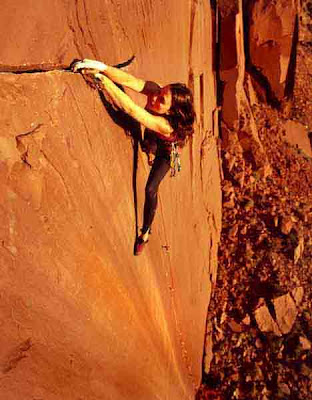
I think winter is the ultimate season here in Moab, for climbing and BASE jumping. When it's sunny, the conditions couldn't be better for sending the hardest cracks. And when it's cloudy and snowy, it just makes for more adventure getting on top of the cliffs to jump off of them.....
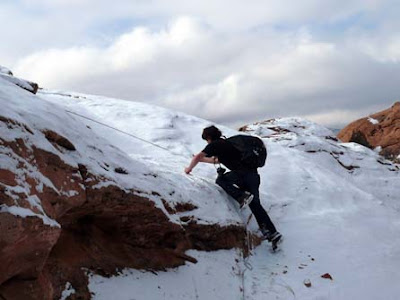
The only thing that can really shut us down for jumping is wind. Moab cliff jumps are all short, under 400 feet, and don't allow any margin for funkiness. These subterminal jumps (so named because your body never reaches terminal speed, of 120 mph, during free fall) require almost no-wind conditions.
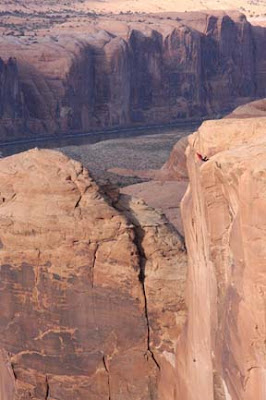
In the morning, the first thing I see when I open my eyes are the vines and trees outside my window. If they're not moving at all, it's good conditions. If the trees are blowing and moving just slightly, it's worth driving the three miles out to Kane Creek and checking the wind there. I have a really nice wind flag I made out of thin, ripstop nylon. The flag lets you know right away if it's jumpable, or if you should just get back in the car and drive home.
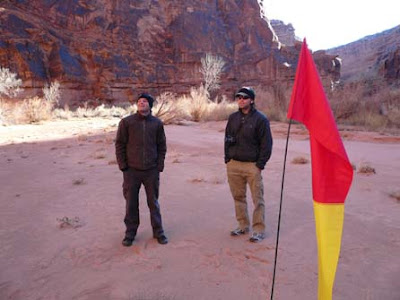
On top of the cliff, it's good to check the flag again, and do a few spit tests down the wall. I always like to put the BASE rig on before going right to the edge, leaning over, and spitting down the wall :)
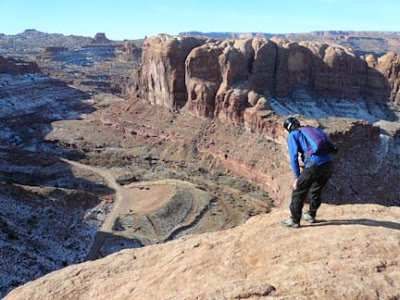
If the spit hits the wall, that's a pretty good indicator that the wind is not right for jumping. Because the greatest danger in subterminal jumps is the (slim!) chance that the parachute might somehow open pointing in the wrong direction, facing towards the wall, a headwind is very bad for jumping. Almost everything we do here in Moab is geared around having perfect, on-heading openings. But you just never know when a 180 might happen, and it's crucial to always be prepared for it before each jump, both with practice and mental planning.
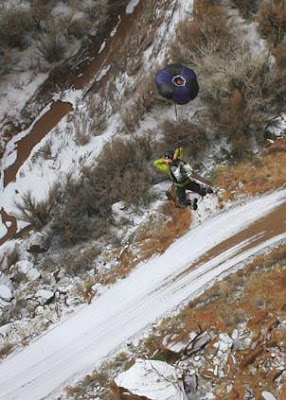
If the canopy does open in a 180 offheading direction, you need every fraction of a second as you attempt to instantly turn the canopy around before you hit the wall. A small head wind could make the difference. So for that reason, the conservative BASE jumper (like me!) has to make decisions based on the wind, and this can often mean just walking back down from the cliff. It can also mean waiting for a while and doing lots of spitting. Since subterminal jumps take about 3 seconds, and then sometimes about 8 seconds of canopy time, even with funky wind conditions, the patient jumper can wait for a very short lull in the wind, and with some luck, still take the fast way down.....!
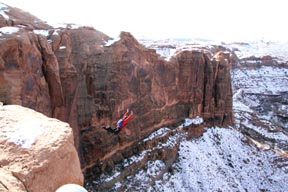
posted by Steph Davis (highinfatuation.com)
 David Sending Beyond Life (Gustavo Moser Photo)
David Sending Beyond Life (Gustavo Moser Photo)

















